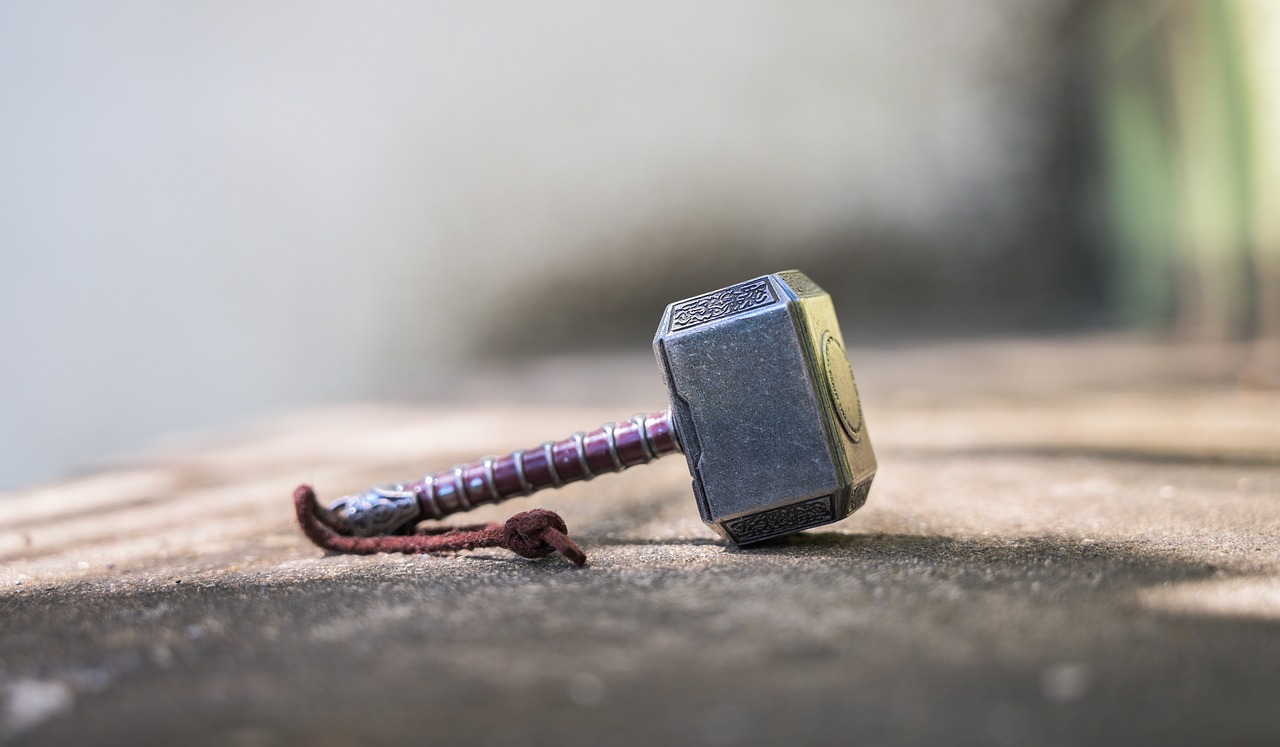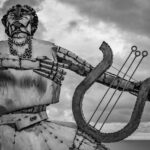The Mighty Thor: A Journey Through Norse Mythology
Thor, known as Þórr in Old Norse, stands as one of the key figures within the Norse mythology, revered as a powerful deity among the Æsir gods. He shares this esteemed position with his father, Odin, the ruler of Asgard, and Freyr, the king of the Vanir. A prominent feature of his life is his marriage to the beautiful goddess Sif, with whom he has a daughter named Þrúðr. His connections extend further through his various romantic liaisons with the Jötunn Járnsaxa, which resulted in a son named Magni, and an unnamed woman, with whom he fathered Móði. Additionally, he serves as a stepfather figure to Ullr.
Life and Accomplishments
In the vast realms of Norse mythology, Thor emerges as a prominent warrior, characterized by immense strength and unwavering loyalty. He is regarded as a stalwart defender, committed to safeguarding both humanity and the Æsir deities from the threats posed by the Jötnar. To execute his protective duties, Thor wields several powerful artifacts, including Megingjǫrð, a belt that significantly enhances his strength, Mjölnir, his iconic hammer, and Járngreipr, a pair of gloves designed to help him manage Mjölnir’s extraordinary powers. For traveling between realms, Thor is often depicted riding in a chariot drawn by his magical goats, Tanngrisnir and Tanngnjóstr, whom he can consume and subsequently resurrect.
The Construction of Asgard’s Walls
In a notable myth, the construction of Asgard’s fortifications led to a tense agreement between the gods and a mysterious builder, accompanied by his magical horse Svaðilfari. The builder proposed a high price for the fortifications, requesting the sun, moon, and goddess Freyja as payment. Upon discovering this builder was a Jötunn with ulterior motives, Thor confronted him, aided by Loki, who tricked the steed. This confrontation ended with Thor defeating the builder, and from this encounter, Loki would later give birth to Sleipnir, the famed eight-legged horse.
The Stolen Hammer
One day, Thor awoke to find Mjölnir missing, throwing him into a state of chaos.Realizing the urgency, he sought counsel from Freyja and Loki. Loki, suspecting foul play, donned Freyja’s falcon mantle to scout Jötunheim for the culprit. Eventually, they discovered that Þrymr, a Jötunn king, had stolen the hammer and demanded Freyja as his bride in exchange. The gods convened to devise a plan, concluding that Thor would disguise himself as Freyja, with Loki posing as his bridesmaid, to reclaim Mjölnir.
As they arrived at Þrymr’s hall, Thor struggled to maintain his façade, indulging in a feast that overwhelmed him. When it came time for the ceremony, Thor’s excitement upon seeing Mjölnir led him to abandon his disguise, resulting in a fierce battle where Thor reclaimed his hammer and defeated the Jötnar.
Fishing with Jörmungandr
In another thrilling tale, Thor attended a feast hosted by the giants Aegir and Ran, who required a vast cauldron to brew mead for the event. To acquire it, Thor ventured to the giant Hymir, where his legendary appetite soon tested Hymir’s patience. On a fishing expedition, Thor used a bull’s head as bait, leading to a fateful encounter with the Midgard Serpent, Jörmungandr. Thor’s determination to confront the serpent caused a tumultuous struggle, but in the end, Hymir’s panic led to the serpent escaping, much to Thor’s frustration.
The Nature of Thor
Thor is often depicted as an ideal protector, yet his personality is varied; he is known for being hot-headed and jovial, enjoying hearty feasts as much as combat. His fierce demeanor is showcased through his relentless dedication to peace, even if it leads to breaches of conduct among gods and mortals. An illustration of this is his confrontation with the dwarf Alvíss, who sought to marry Thor’s daughter using trickery, leading to a riddle contest that ultimately exposed Alvíss to the dawn and turned him to stone.
Physically, Thor is traditionally represented as a robust figure with striking features, including red hair and a matching beard, embodying a fierce warrior ethos. Unlike modern comic interpretations, mythological Thor is depicted as barrel-chested and rugged, cloaked in armor reminiscent of ancient Viking warriors.
Supernatural Abilities
With roots in both the Æsir and Jötunn lineages, Thor possesses godlike abilities including extraordinary strength and near-invulnerability. His powers manifest through Mjölnir, enabling him to control storms, lightning, and even offer blessings to others. Moreover, he can resurrect the deceased and heal physical and emotional wounds, reflecting his connection to the earth and his lineage.
While Thor may primarily be viewed as a fierce warrior, he also possesses a cunning intellect, demonstrated in his victorious riddle contest against Alvíss. His numerous stories illustrate both his valor and vulnerabilities, making him a multifaceted character both in mythology and in popular culture.
Cultural Representation
Thor’s legacy transcends his mythological roots and has permeated modern media, appearing in various films, books, and games. The Marvel Comics iteration of Thor, created in the 1960s, presented him as a heroic figure with a distinct appearance and story, contributing to his widespread recognition today. This version often intersects with characters like Hercules, showcasing a blend of various mythologies.
Through adaptations in various formats—from animated series to video games—Thor remains a figure of fascination, representing strength, bravery, and the complexities of his character while embodying the timeless allure of Norse mythology.





